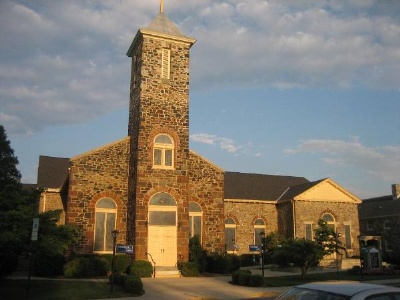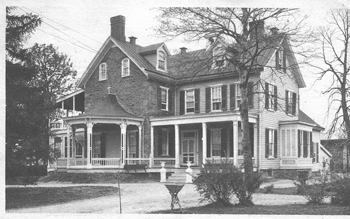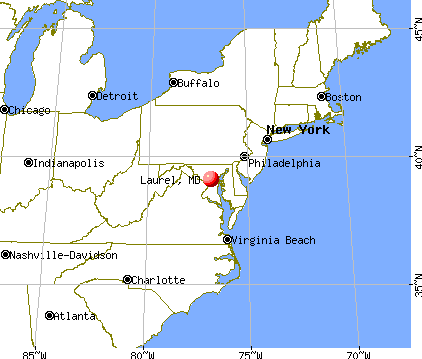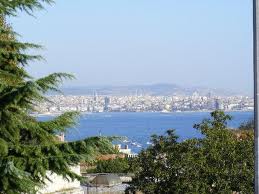LAUREL, MARYLAND
Richard Snowden, a wealthy Welsh Quaker in the late 17th century, originally owned the land which eventually became the city of Laurel. A few generations later, Nicholas Snowden built a huge flour mill around 1810 on the Patuxent River, near the future site of St. Mary’s church.

St. Mary of the Mills Church in Laurel
Various cotton mills followed through the years. Census records reveal that young children were among the many employees of the mills in the early 1900’s.
The early history of St. Mary of the Mills elementary school, and that of Pallotti High School coincide with one another.
St. Mary of the Mills School
The school was founded in 1893 by Father Caughy, with an enrollment of forty students, using part of the sacristy of the church as classrooms.
On July 9, 1911, Fr. Joseph Aloysius Myer came to St. Mary of the Mills Parish in Laurel. In 1917, the school was moved to large stone house that had been the home of Dr. Theodore Jenkins, the builder of St. Mary’s Church. The building was estimated to be over 150 years old.

The house at a later date, while it was part of St. Mildred’s Academy. The building was torn down to make room for Pallotti High School. (Photo:http://www.laurelhistory.org/capron/)
The school was renamed St. Mildred’s Academy, to honor Fr. Myer’s sister, Sr. M. Mildred Myer, who was a member of the Sisters of Mercy. It became St. Mary of the Mill when Fr. Hugh Breen became pastor in 1943. The cornerstone of the new building was laid in 1953. Some of the stones from the old building were used to adorn the front of the new building.
In 1917, the Sisters of Mercy staffed the school. From 1921 to 1934, it was staffed by the Sisters of St. Joseph of Chestnut Hill, Pa. In 1934 Fr. Myers had financial problems, and wished to be relived of the burden of the school. The Pallottine fathers informed the Pallottine Sisters of the situation, and they purchased the property. The pioneer sisters were Srs. Vincentia Rogge, Kostka Hansen, Henrica Roettgen, Dolores Belniak, Mary Bede Kurth, Fidelis Blatt, and Madeleine Lopez. Srs. Carmencita Brown and Constance Domning, who were second year novices and students in the high school, were also a part of the household.

Laurel was poor in the beginning. The sisters and Mr. Mehahik removed the wall paper, and painted the walls in the convent and the academy. They lived in expectation of food packages from Huntington.
The sisters received no salary from the grade school, except the tuition fee of one dollar per month, ten dollars a year from each student. Financial support came from the “St. Therese Collection.” Each parish in Baltimore made a collection, which was sent to the Archbishop. The poorer parishes could request the return of their money.
The Little Flower League also gave an annual contribution of $350 to $400.
A Pittsburgh Catholic newspaper carried the following article in 1952: St. Mary of the Mill: “Fifty children in a small four-room house with no plumbing facilities of any kind, inadequate heat, no playground, no library, almost nothing but the good sisters to teach them.”

The beauty of Laurel
The class size grew to sixty-five or even seventy in the years that followed. The new building had large classrooms, and a playground was provided to enable the children to enjoy the fresh air and run off excess energy at recess time.
The sisters left the grade school as they no longer had the staff to continue this apostolate.


